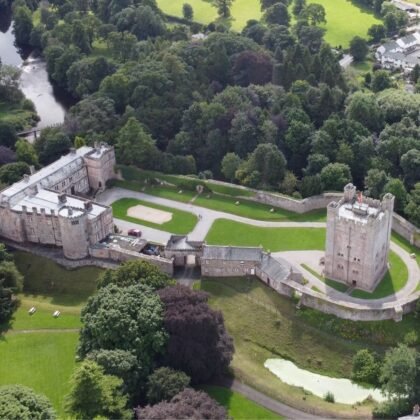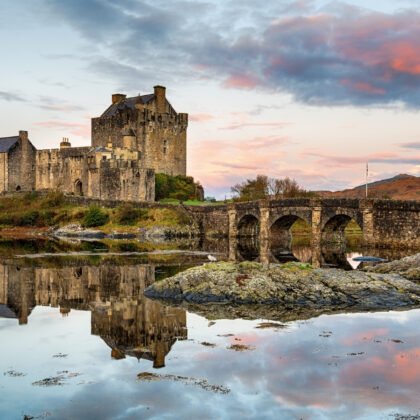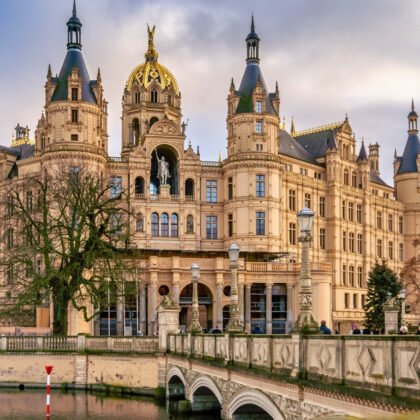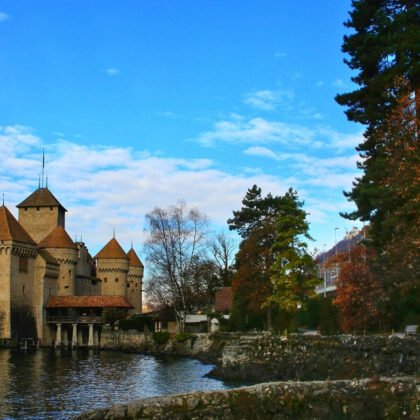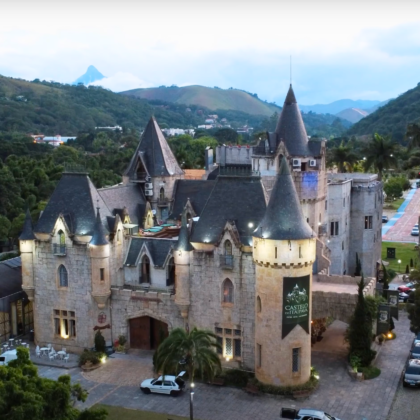Set against the guardian slopes of Mount Bugak, Gyeongbokgung Palace is Seoul’s grand window into the Joseon world. Pass beneath Gwanghwamun and the city’s rush softens into courtyards, lotus ponds, and sweeping eaves. Here, throne halls rise on sculpted stone terraces and pavilions rest above mirrored water—an elegant stage where Korea’s monarchy governed, celebrated, and weathered moments that reshaped the nation.
Quick Facts
📍 Location: Seoul, Seoul Special City, South Korea
🏗️ Construction Period: 1395 (founded); 19th century (reconstruction); 1990s–present (restoration)
🏰 Architectural Style: Joseon-era traditional Korean architecture; Confucian, geomancy-based (pungsu-jiri) layout
🎭 Famous For: Main royal palace of the Joseon Dynasty; Geunjeongjeon throne hall; Gyeonghoeru Pavilion on a lotus pond; Changing of the Guard; Imjin War destruction (1592); 1895 assassination of Empress Myeongseong
👑 Notable Figures: King Taejo (founder), King Sejong the Great, Empress Myeongseong
🏆 UNESCO Status: No
🌐 Official Website: https://royal.cha.go.kr/ENG/contents/E101010000.do
Map
Historical Context
Founded in 1395 by King Taejo, Gyeongbokgung became the primary royal residence and the political heart of the Joseon Dynasty. Its name—“Palace Greatly Blessed by Heaven”—signaled the new dynasty’s legitimacy and hopes for prosperity. Aligned with geomancy and framed by Bugak Mountain, it hosted coronations and state rites in Geunjeongjeon Hall, while Gyeonghoeru Pavilion staged grand banquets over a lotus pond. The palace was razed during the 1592 Japanese invasions and lay in ruins for nearly 270 years before a 19th-century revival. Tragedy and colonial-era demolitions followed, including the 1895 assassination of Empress Myeongseong. From the 1990s, meticulous restoration has steadily returned gates, halls, and pavilions, allowing visitors to trace Korea’s royal narrative amid serene courtyards and water gardens.
Gallery
Visiting Information
🗓️ Best Time to Visit: April, May, late September, and October
🗺️ Location Perks: Set at the foot of Bugak Mountain near Gwanghwamun Square, with the National Palace Museum and National Folk Museum on site. Bukchon Hanok Village and Samcheong-dong’s galleries and cafes are a short stroll away.
⏳ Estimated Visit Duration: Plan to spend 2–3 hours exploring the castle and its grounds.
💡 Visiting tips: Arrive early to beat tour groups, or visit late afternoon for softer light; rent a hanbok for free entry and memorable photos; don’t miss the Changing of the Guard at Gwanghwamun and check Gyeonghoeru access times.









